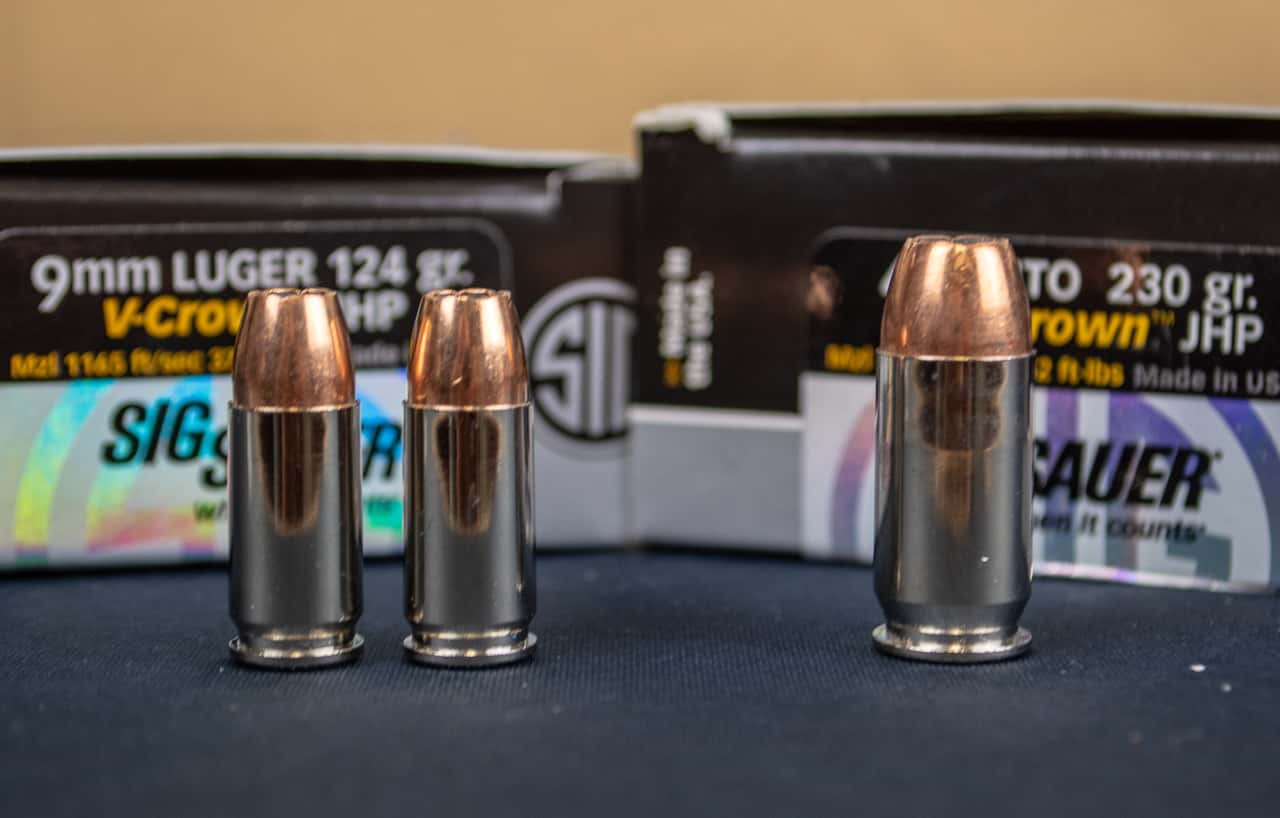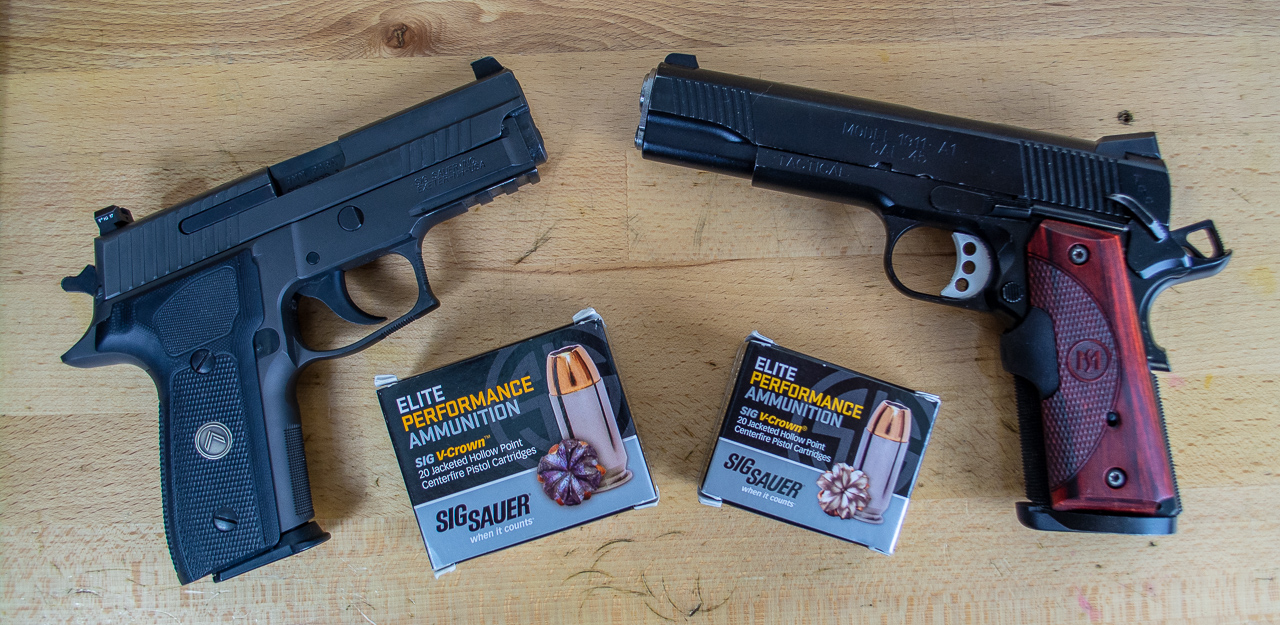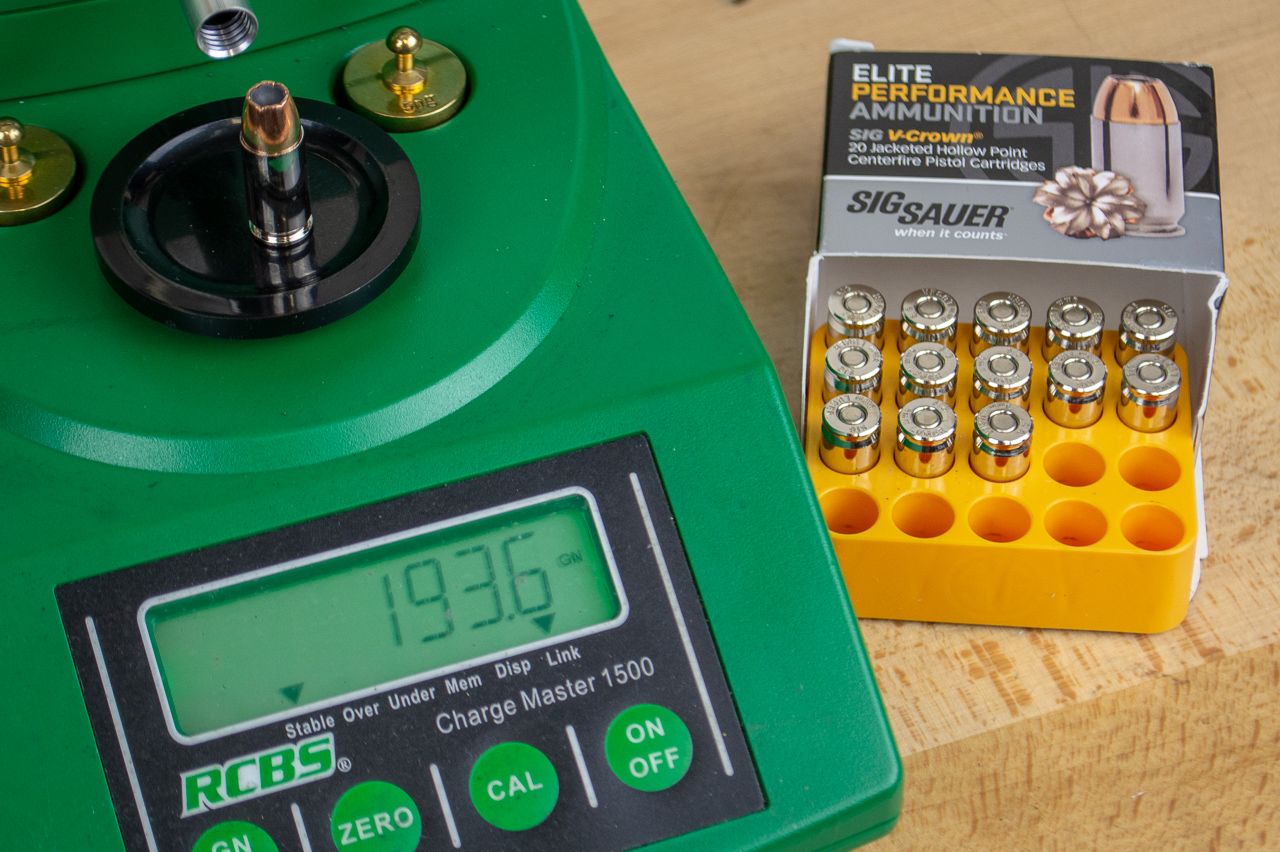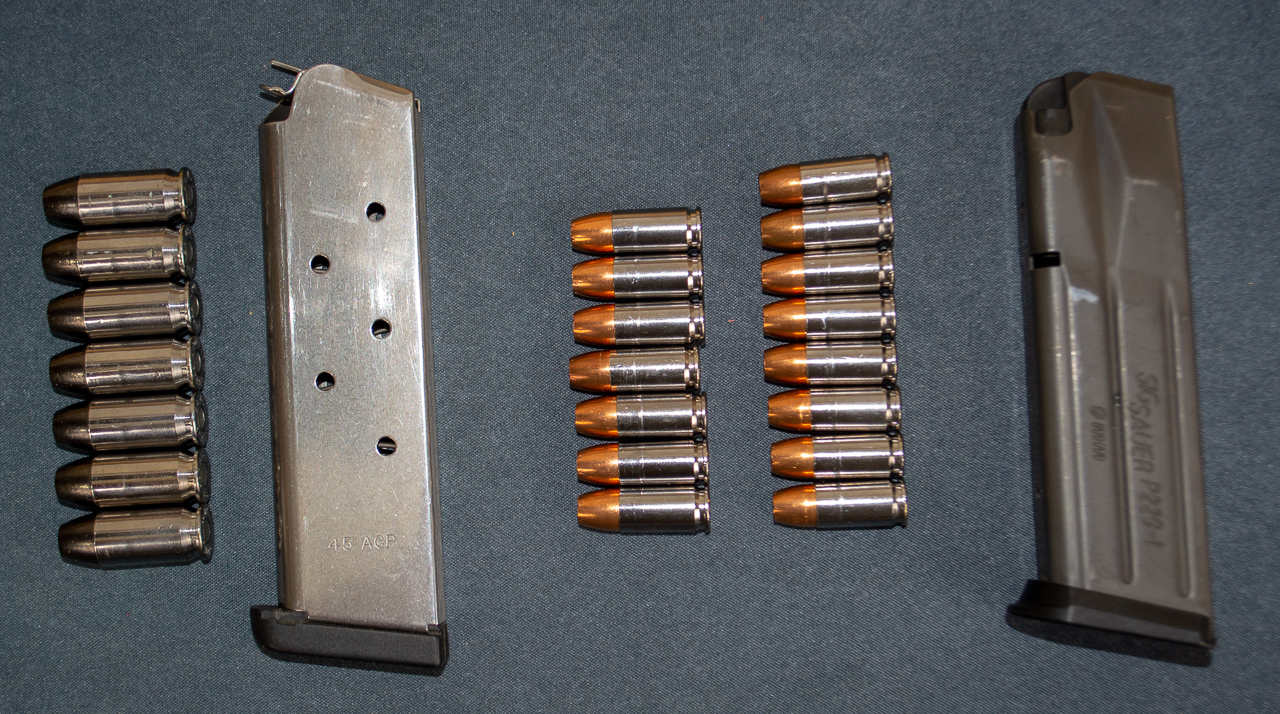3 Reasons to Choose 9mm: By the Numbers
Tom McHale 07.30.18

There are three certainties in life. Death, grandstanding politicians, and the 9mm versus .45 ACP debate.
Since much of the emotional debate has been covered ad nauseam by insightful comments like “I carry a .45 because there’s not a .46,” and “Calibers that don’t start with a ‘4’ just make people you shoot irritable,” we’re going to take a slightly different approach – by the numbers. So, today, let’s discuss why choosing 9mm is the only sensible option in this day and age. Any other choice will probably get you killed and mocked mercilessly by France.

If you’re offended by the 9mm because it doesn’t even have the diameter of a #2 pencil eraser, don’t worry, next time we’ll flip-flop like a re-election-seeking politician and argue on behalf of the venerable .45 ACP. So hang in there; your day is coming.
Buy one, get one free!
That’s BOGO for you deal-shopping aficionados. No, 9mm’s aren’t on sale at K-Mart. However, given the size and weight, most 9mm pistols of roughly equal bulk and heft will pack two 9mm rounds for every single shot in a comparable 45-caliber handgun. As an example, the Springfield Armory 1911 TRP sitting here on my desk weighs 42 ounces unloaded and holds seven in the magazine plus one in the chamber. If you do the math, that’s a total carry capacity of eight rounds. Sure, I can get magazines that fit eight, but we’re not going to nitpick here – we’re looking at the big picture. For a common 9mm example, the Beretta 92FS is about the same physical size, weighs a bit less at 33.3 ounces, and packs 15+1 for a total of 16. The newer Beretta APX and numerous other pistols fit 17+1 in a similar package.

If you want to get nitpicky, a 124-grain 9mm round weighs about 196 grains (about .448 ounces) give or take depending on the brass and powder load. A 230-grain .45 ACP weighs in at 322 grains (.726 ounces.) Just in case you’re wondering if you do the math on a 15-round 9mm full magazine and a 7-round 45 magazine, you’re looking at 6.72 versus 5.082 ounces just counting the ammo weight. So, doubling the number of available shots only comes at a 32% weight increase.

We’re not going to get into what’s a better pistol, the 1911 or one of those double-stack wonder nines. The relevant point here is that while they are similar in size and weight, one carries roughly twice as many shots as the other with a minimal weight increase.
Modern 9mm bullets are as good as .45s! Or are they?
Yeah, I know. A single .45 ACP can knock someone out of their shoes and generally outperform a 120mm DragonFire mortar, at least according to Reddit. However, a couple of very motivated people have embarked on the painstaking task of documenting and meticulously categorizing hundreds of shootings. Given the infinite number of variables at play, there is just no way to replicate and predict relative caliber performance in the lab or on predictive theoretical parchment. That’s why the historical studies are so enlightening; it’s real data from the street. While still a guideline, it’s the best we have.
So let’s get back to the data. Self-defense trainer and all around serious gun guy Greg Ellifritz spent ten years collecting data on 1,785 unique shootings involving common calibers ranging from .22 Long Rifle to 12-gauge shotgun. Among his many goals was to understand if there were significant statistical differences in things like “stopping power” and “one-shot stops” from one caliber to the next. As Greg indicates in his summary results, he didn’t “have a dog in the fight” because he carries multiple calibers at different times. Oh, and data rules. You can read the full report on your own over at Buckeye Firearms, but here are a couple of “performance on the street” data points for 9mm and .45 ACP.
| 9mm | .45 ACP | |
| Percentage of hits fatal | 24% | 29% |
| Rounds to incapacitate | 2.45 | 2.08 |
| Percentage of people not stopped | 13% | 14% |
| One-shot stop percentage | 34% | 39% |
| Percentage incapacitated by one-shot torso or head hit | 53% | 51% |
A couple of comments on the numbers. They’re not statistically different in nearly as dramatic a fashion as online debates would imply. In a couple of categories, the .45ACP seems to outperform the 9mm (it is bigger after all), but it’s not exactly an earth-shattering difference. If anything, I would take away from the similarities the fact that there is a lot more at play than just bullet diameter. But, for our purposes here, any minor advantages of the .45 ACP over the 9mm are far outweighed by the fact that you get a lot more 9mm shots per gallon. Refer back to the first section – buy one, get one free.
Recoil by the numbers.
Everybody “says” that 9mm pistols have less recoil than bigger, badder calibers, but what does that really mean? People complain about the “big” recoil of .45 pistols, but to me, a .40 S&W of similar size and weight feels like it has a lot more recoil than a .45. I suspect that’s a result of the velocity differences. What you perceive depends not only on the force but the speed of the recoil impulse. In my personal experience, the recoil of a .45 pistol feels like more of a push than a sharp snap. The .40 S&W is more the opposite. It just feels snappier. It’s kind of like the difference between getting pushed out of the ring by a 350-pound Sumo wrestler versus getting knuckle punched in the throat by Bruce Lee. The foot-pound energy of both scenarios may be identical, but one hurts a lot more than the other. As for the 9mm, it shoots a lighter bullet than the others and feels downright genteel in comparison.
So let’s look at the numbers. Recoil “energy” that you feel depends on several factors including the weight of the gun, the weight of the bullet, the velocity of the projectile, and the weight of the powder inside the cartridge. Yes, even though it’s burning and changing form into hot, burning gas, that mass still goes out the fiery end and causes an equal and opposite reaction towards you, the shooter. So, when we factor all that in for a Smith & Wesson 1911 full-size SW1911 TA that weighs just shy of 42 ounces empty, recoil energy works out to 5.34 foot-pounds. Doing the same math for a Sig Sauer P229 Legion (another metal gun), the 9mm recoil works out to just 2.97 foot-pounds. Even a lightweight Smith & Wesson Shield 9mm hits you with only 4.51 foot-pounds. Oh, and the .40 S&W? For our example case, let’s consider a full-size handgun, the Beretta PX4. That weighs 27.7 ounces empty, and when shooting a 180-grain bullet over 7.1 grains of powder, generates 6.90 foot-pounds of oomph to your shooting hands. So, compared to the 9mm, the .45 approaches double the recoil energy and the .40 S&W is more than double.

Whatever the sensation, it’s all about the ability to control your gun, especially under stress. The 9mm does, in fact, have less recoil because it’s launching less junk out the fiery end. As a result, it’s going to move less, whether that be muzzle flip, rotation, or the straight back push. Sure, if you’re big and strong, you can easily control a .45 ACP, .40 S&W, .357 Sig, or even 10mm handgun. But that’s not the point. You and your muscles will have to work harder to keep the sights on target from shot to shot, and that costs time. The bottom line is this. The less your gun moves under recoil, the faster and more accurate you can be.
So there you have it. The debate is over thanks to common core math principles applied to ballistics. If you don’t choose a 9mm over a .45 ACP, you’ll almost certainly develop bunions and have to wear a fanny pack for your assortment of topical ointments. It’s just a fact.

